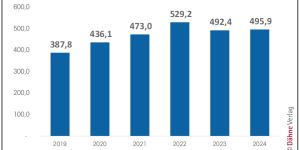As anticipated by the researchers of The Farnsworth Group and the Home Improvement Research Institute (HIRI), home owners are shifting away from home improvement projects and towards home repair and maintenance projects. Most home owners (37 per cent) are currently spending between USD 100 and USD 499 on each project they complete, while 19 per cent are spending between USD 500 and USD 999 per project.
Only 28 per cent of home owners think that now is a bad time to start a DIY or home improvement project costing under USD 5 000. Conversely, for projects over USD 5 000, 52 per cent of home owners view now as a bad time to start those larger home improvement, remodelling or maintenance projects. According to the researchers, the main reason for this is that home owners are feeling more price pressure and budget constraints than they have in previous years.
In addition, project cost remains the biggest challenge for home owners (51 per cent). Another sign of increased price sensitivity is that 48 per cent of home owners said that their project cost more than expected.
Whereas 88 per cent of home owners completed a R&R project in February (up from 82 per cent in January), only 58 per cent completed a home improvement project (down from 61 per cent in January).
The Farnsworth Group and the Home Improvement Research Institute partner to provide building product manufacturers and suppliers with monthly updates on critical factors impacting customer behaviour and attitudes to home improvement. For 2023, updates include questions specific to pricing, availability, and project intent. Each month, the two organisations survey hundreds of DIYers, DIFM customers and contractors to get a feel for home improvement sentiment and the behaviour of each audience.

 Menü
Menü

















